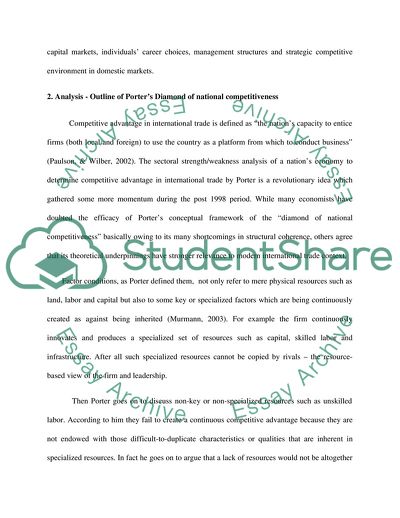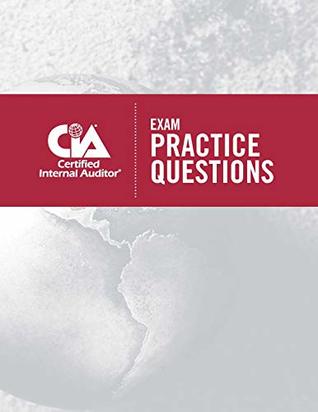Contents:

Visit our about SNHUpage to learn more about our mission, accreditations, leadership team, national recognitions and awards. Now more than ever, it’s a great time to get a master’s in accounting and enter or advance in this surprisingly diverse profession. Today’s accountants do much more than count money and balance the books. They solve crimes, play a role in healthcare reform, run small businesses and more.

When company X struggled with the question, “How happy are our customers with the services we provided? I collected quantitative data about the services based on such parameters as price, quality of customer service, etc. I also used the net promoter score question and matrix table questions. The analysis of the numbers helped to develop new strategies and increased customer satisfaction by 30%.
- Statistical analysis is used to present the outcome using this quantitative research method.
- Data evaluation is how researchers go from a mass of information to significant insights.
- In some of the nations, it has been identified that critical thinking skills and development of quantitative reasoning on numeracy skills initiates in childhood.
A qualitative risk evaluation may also embody the suitable categorization of the risks, both source-based mostly or impact-based mostly. For instance, area notes, interviews, video, audio, open-ended survey questions all provide qualitative knowledge for analysis. However, applying behavioral coding to your observations is extraordinarily time consuming and costly. Quantitative evaluation consists of computational and statistical methods of analysis. What must be clear by this point is that one isn’t better than the other. If something, qualitative and quantitative risk evaluation should be conducted in tandem, giving you the best possible perception into the dangers and their potential impact on the successful execution of your project.
If you feel that, for you, numbers tell more than words, use our tips to demonstrate your https://1investing.in/ skills in the best way to your potential employer, using a convincing resume and cover letter. After conducting a conference on web services, I began collecting feedback from participants to find out whether the event was useful for them. My event survey template helped me receive effective feedback which was used to improve the organization of future events. While working with a team of mathematicians and engineers to analyze investment data for stock market trading, I contributed to 90% of our company’s successful investments. Due to my experience, I am well-versed in research and data analysis and can present detailed information in a scientific manner. This skill helps me to plan successful annual budget conferences, meeting all the deadlines and understanding the dynamics.
Disadvantages of quantitative data
Used together, they provide useful information for informed decisions that promote a better society, improve financial positions, and enhance business operations. However, to get a better picture of a company’s performance, analysts also evaluate information that is not easily quantifiable or reduced to numeric values, such as reputation or employee morale. Qualitative analysis focuses on meanings, involves sensitivity to context rather than the desire to obtain universal generalizations, and establishes rich descriptions rather than quantifiable metrics. Qualitative analysis seeks to answer the “why” and “how” of human behavior. Financial engineering combines the mathematical theory of quantitative finance with computational simulations to make price, trade, hedge, and other investment decisions. However, setting a budget for the marketing department can be tricky, especially if its objectives are not set.

Describe the purpose of random selection in an observational study and the purpose of random assignment in a statistical experiment. From equities, fixed income to derivatives, the CMSA certification bridges the gap from where you are now to where you want to be — a world-class capital markets analyst. Discrete data takes on fixed values (e.g. a person has three children), while continuous data can be infinitely broken down into smaller parts. That is, to answer the questions that start with “how many…” or “how often…”, for example.
A. Techniques and Types of Studies
Next I discuss how the character of the sample affects your ability to make statements in regards to the relationship in the population. Finally I give recommendation in regards to the sorts of variable you have to measure. Quantitative Research is used to quantify the problem by the use of producing numerical information or data that may be reworked into usable statistics. It is used to quantify attitudes, opinions, behaviors, and different outlined variables – and generalize results from a bigger sample population.
- Quantitative reasoning is a highly advanced and complex psychometric test which measures the ability of an individual to use his or her mathematical skills and knowledge in solving different problems.
- You need to be able to thrive in an setting with little supervision and underneath appreciable pressure.
- One of the greatest challenges that businesses face is being able to predict the demand for a product or service.
New tools are available to assist improve the validity of your risk analysis and perceive the steps needed to mitigate potential issues. It uses verifiable knowledge to analyse the results of danger by way of value overruns, scope creep, useful resource consumption, and schedule delays. Ultimately, the aim is identical; the difference is that it takes a more scientific, information-intensive method. Quant is generally regarded as one of the hardest, if not the hardest, courses in undergrad chem. It’s not math applied to synthesis though, it’s math applied to analysis, which is a different beast all together.
Alumni Blog: Ravi Varghese, Head of Sustainable Investing at a global asset management firm
Secondary quantitative skills definition research helps to validate the data collected from primary quantitative research and aid in strengthening or proving, or disproving previously collected data. Causal-comparative research is not restricted to the statistical analysis of two variables but extends to analyzing how various variables or groups change under the influence of the same changes. This research is conducted irrespective of the type of relationship that exists between two or more variables. Statistical analysis is used to present the outcome using this quantitative research method.
U.S. Construction Equipment Rental Market is Expected to Grow by … – PR Newswire UK
U.S. Construction Equipment Rental Market is Expected to Grow by ….
Posted: Tue, 28 Feb 2023 15:01:00 GMT [source]
While descriptive statistics give you an initial read on your quantitative data, they don’t allow you to draw definitive conclusions. With inferential statistics, you can make inferences and predictions. This allows you to test various hypotheses and to predict future outcomes based on probability theory. Data analysts and data scientists are less likely to conduct experiments, but they may send out questionnaires and surveys—it all depends on the sector they’re working in. Usually, data professionals will work with “naturally occurring” quantitative data, such as the number of sales per quarter, or how often a customer uses a particular service. While quantitative data can be counted and measured, qualitative data is descriptive and, typically, unstructured.
To estimate data points and model natural phenomena, scientists who specialize in some fields, such as physics, may use intricate mathematical equations. Research skills are the ability to search, collect, analyze, interpret, and assess information relevant to the subject. They include report writing, critical thinking and analysis, planning and scheduling, data collection, etc. Quantitative reasoning can also be facilitated through collaborative and interdisciplinary approaches where group work can be considered as one of the effective educational strategies. This approach could promote mathematics and education on quantitative reasoning quantitative literacy can be used in the domain of Social Science Reasoning. It will encourage us to think about the result in a critical manner and to relate the result to real-life learning.

This article will provide you with an overview of the different types of quantitative research, tips on applying this method, and the benefits of conducting it. This method is widely used in natural and social sciences, such as biology, chemistry, psychology, economics, sociology, marketing, and others. Quantitative analysis is used for the evaluation of a financial instrument and predicting real-world events such as changes in GDP.
Apart from these two fields, they are also used to observe a change in the market trend, analyze customer satisfaction, or gain feedback on products/services. Quantitative analysis provides analysts with tools to examine and analyze past, current, and anticipated future events. Any subject involving numbers can be quantified; thus, QA is used in many fields including analytical chemistry, financial analysis, social science, and organized sports. In the financial world, analysts who rely strictly on QA are frequently referred to as “quants” or “quant jockeys.” It would be hard to make a solid argument of which form of data collection is “better”, as it really depends on the type of project you’re working on.
Thanks lots for the insightful distinction between Qualitative and Quantitative analysis. However, the differences as you enumerated did not issue in the advantages and downsides of both research instruments. Thank you for making me to grasp the difference between qualitative Research and quantitative research. Having a profession as a quantitative analyst is intellectually challenging, as an essential part of your function is to solve complex problems whereas beneath strain.
Numeracy could be referred to as the capability of solving quantitative reasoning problems. It also refers to the ability to make judgments and conclusions from the findings of quantitative reasoning indifferent contexts. It is the skill which helps to understand quantitative information and analyses the ways of representing them after interpreting the same with the use of tables, charts diagrams, and graphs. Then, once you have your hypothesis, use quantitative methods to confirm it with data analysis. This will show you whether the issue/problem/situation exists in general, or was just part of someone’s perception. People are always changing, as are their perceptions of the world around them.
When it involves identifying tendencies, researchers look for statements which might be equivalent throughout different research participants. The rule of thumb is that listening to a press release from only one participant is an anecdote; from two, a coincidence; and listening to it from three makes it a development. You can develop or enhance your quantitative skills in a particular professional area by participating in some advanced certification programs. While some certification programs only consist of an exam, others offer training courses or other opportunities to hone your skills ahead of the big test or project. For instance, a certification program for HR professionals might cover topics like budgeting, business management, or other professions that value quantitative skills.
